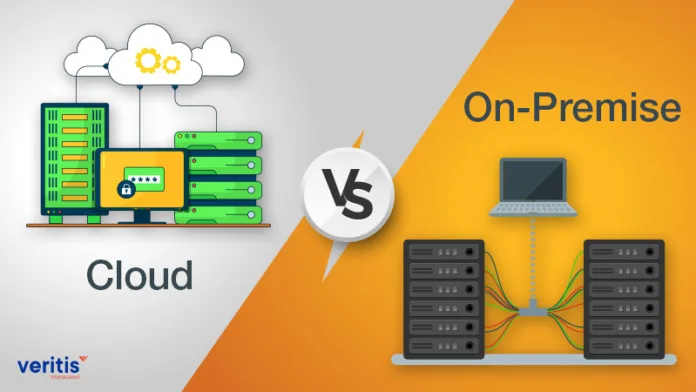
In today’s fast-paced digital landscape, businesses must make critical decisions about their IT infrastructure to stay competitive and agile. One of the most significant decisions companies face is choosing between cloud vs on-premise solutions. Each offers distinct advantages and limitations, and the right choice often depends on your organization’s size, budget, security needs, and future scalability plans.
Understanding the differences between these two models is essential for crafting a resilient and scalable enterprise IT strategy that supports both current operations and future growth.
What Are Cloud Solutions?
Cloud solutions refer to delivering services like computing power, storage, and applications over the internet. With cloud computing, businesses can access these services on a subscription basis without owning or maintaining physical infrastructure.
Benefits of Cloud Solutions
Scalability: Cloud solutions provide elastic scalability, allowing businesses to adjust resources based on demand. Whether you’re launching a new product or expanding to new markets, the cloud can grow with you.
Cost-Effective: Cloud models reduce upfront capital expenditures by replacing them with predictable monthly operating costs.
Remote Accessibility: Teams can access cloud services from anywhere, making it ideal for remote work or global teams.
Automatic Updates and Maintenance: Cloud providers handle system upgrades, patches, and maintenance without interrupting business operations.
Disaster Recovery and Backup: Many cloud services offer built-in backup and disaster recovery features, reducing the risk of data loss.
What Are On-Premise Solutions?
On-premise solutions involve installing software and hardware within your organization’s physical premises. Your internal IT team is responsible for setup, maintenance, updates, and data protection.
Benefits of On-Premise Solutions
Complete Control: Organizations have total authority over the hardware, software, and data handling.
Enhanced Security: For businesses in industries like finance or healthcare, keeping data on-premise ensures compliance with strict regulations.
Customization: On-premise software can often be tailored more extensively to meet specific internal workflows and processes.
Reduced Internet Dependency: On-premise systems don’t rely heavily on internet connectivity, making them useful in regions with poor internet infrastructure.
Cloud vs On-Premise Solutions: A Feature Comparison
| Feature | Cloud Solutions | On-Premise Solutions |
|---|---|---|
| Initial Cost | Low upfront cost (subscription-based) | High upfront investment (hardware/software licenses) |
| Maintenance | Managed by vendor | Managed internally |
| Accessibility | Remote access via the internet | Limited to internal networks |
| Data Security | Depends on vendor’s encryption & protocols | Fully controlled in-house |
| Scalability | Instantly scalable based on usage | Requires manual upgrade of hardware/software |
| Compliance | May meet global standards (but varies) | Easier to meet local or industry-specific regulations |
Which One is Right for Your Business?
Choosing between cloud vs on-premise solutions depends on several factors:
Budget Flexibility: Small to medium-sized businesses may prefer cloud solutions for lower upfront costs and flexible pricing models.
Security and Compliance Needs: Industries that deal with sensitive data may prefer on-premise systems for tighter control.
IT Staff Availability: Cloud models are ideal if you lack a full-time IT team, while on-premise solutions require dedicated in-house experts.
Growth Expectations: If your business anticipates rapid growth, cloud platforms offer easier and faster scalability.
Hybrid Approach: The Best of Both Worlds
Some businesses adopt a hybrid model that blends both cloud and on-premise capabilities. This approach allows companies to store sensitive data on-premise while leveraging cloud solutions for applications that require flexibility and remote access.
Future Trends in IT Infrastructure
As cloud computing benefits continue to evolve, more companies are shifting toward cloud-first strategies. However, on-premise software remains relevant, especially for businesses prioritizing security and compliance.
Artificial Intelligence (AI), Internet of Things (IoT), and edge computing are also influencing infrastructure choices, making the decision between cloud and on-premise even more strategic.
Conclusion
The decision between cloud vs on-premise solutions is not one-size-fits-all. It’s crucial to evaluate your organization’s goals, regulatory requirements, budget, and technical capabilities. Both models have their strengths and can drive business success when aligned with your enterprise IT strategy.
Whether you embrace the flexibility of cloud or the control of on-premise systems, your infrastructure should empower your business to innovate, grow, and remain secure in an increasingly digital world.